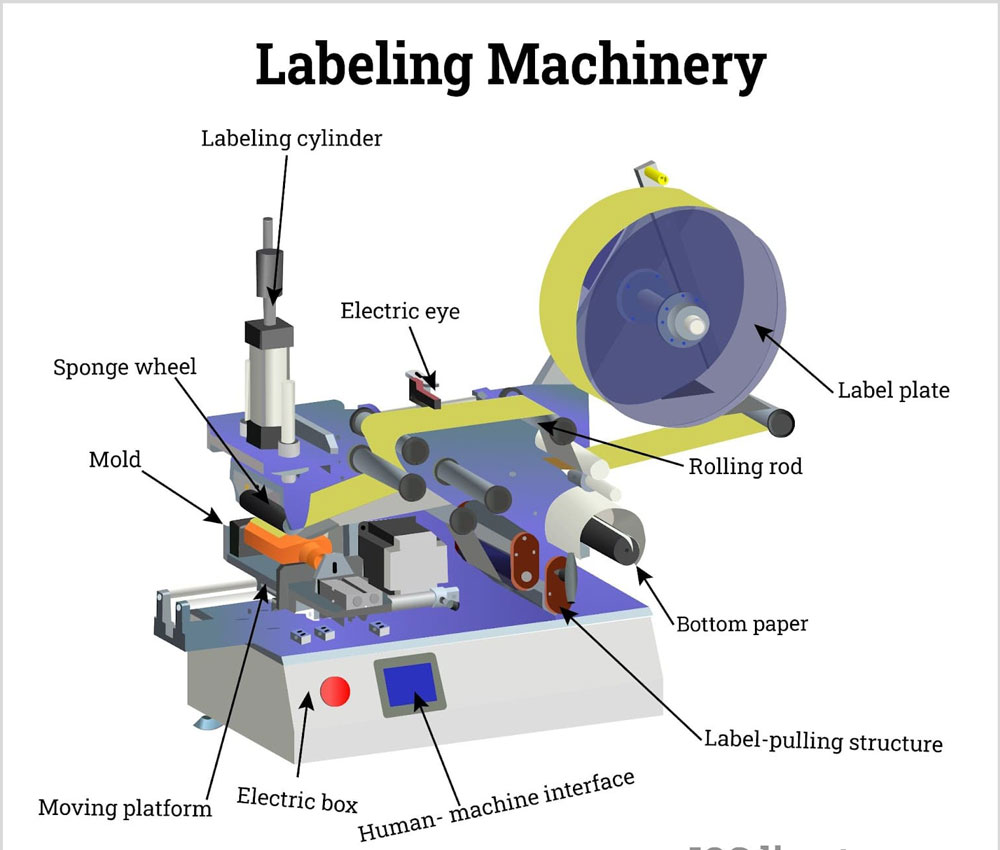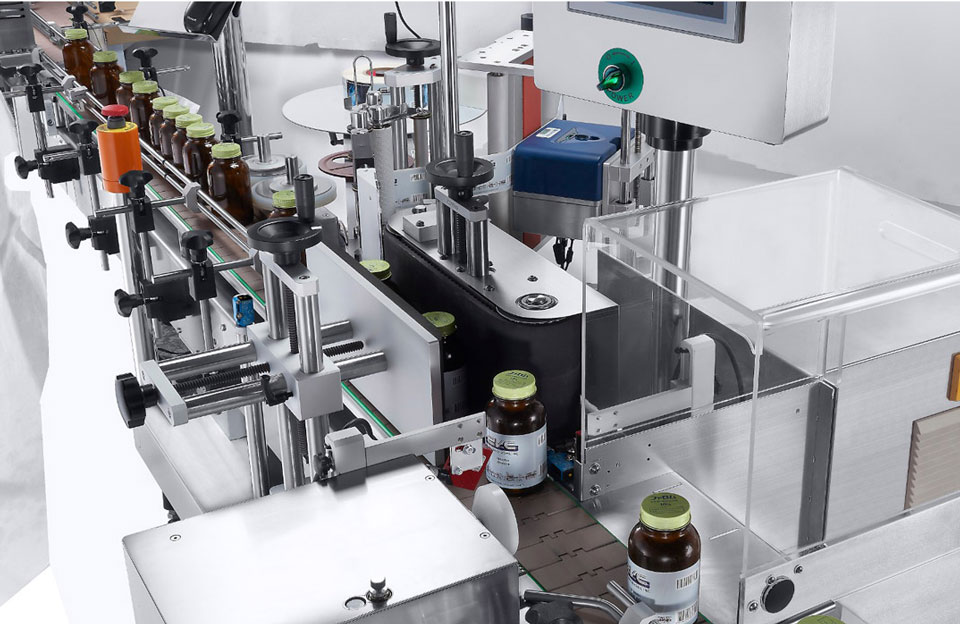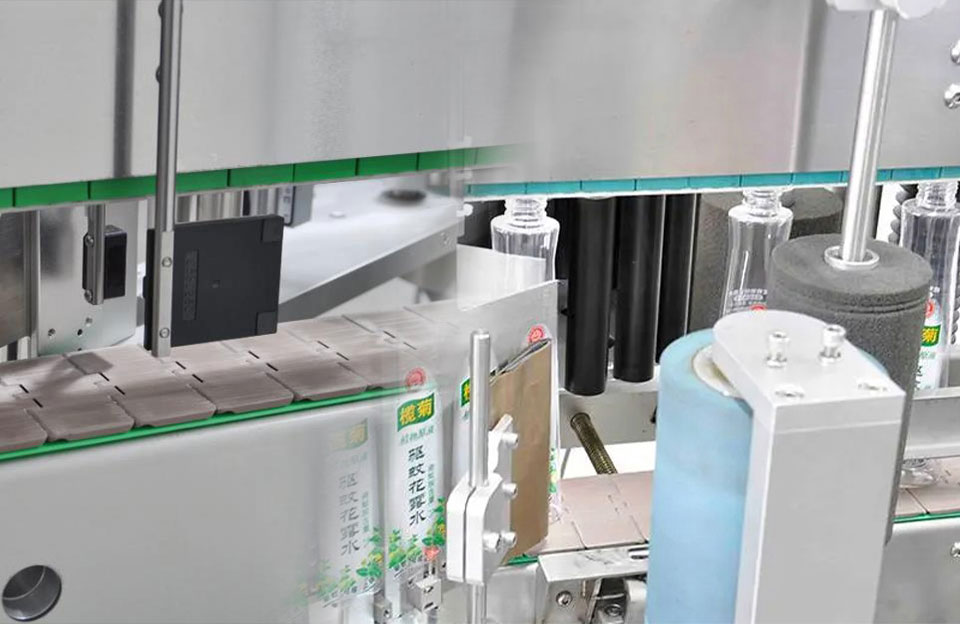As technology advances, the upgrade of labeling machines are obvious, reducing downtime and limiting the amount of skilled labor required to operate. Industry-leading smart technology uses sensors to reduce the complexity of label applications, ensuring a one-to-one label-to-product match. Users can remotely adjust system settings and view system status through the industrial label printer without manual intervention on the production line. Labeling machines enable manufacturers to reliably print and apply labels in various applications, including side, top, front, back, and corner packaging of products, cases, and pallet panels.
What Aspects Are Reflected in Upgrade of Labeling Machines by Technological Change?

Technological advances can significantly affect the upgrade of labeling machines, bringing various improvements and enhancements.
- Automation and Integration: Technology upgrades can increase automation and seamless integration with other production processes. Modern labeling machines can be integrated into fully automated production lines, reducing the need for manual intervention and optimizing overall efficiency.
- Precision and Accuracy: Advances in sensors, controls, and actuators have enabled labeling machines to achieve higher precision and accuracy when applying labels, ensuring that labels are correctly and consistently placed on products, reducing waste, and improving product quality.
- Speed and Throughput: Technological improvements can lead to faster labeling speeds and higher throughput. Faster machines can keep up with high-speed production lines, allowing manufacturers to meet growing demand.
- Flexibility and Customization: The upgrade of labeling machines can provide greater flexibility in label format, size, and application location, allowing manufacturers to accommodate various product sizes and shapes without extensive reconfiguration.
- Touch Screen Interface: User-friendly touch screen interface is becoming increasingly common in modern labeling machines. The intuitive interface makes it easier for the operator to set up and control the machine, reducing the learning curve and potential for errors.
- Digital Printing and Variable Data Processing: Some labeling machines now have digital printing capabilities to print labels with variable data on demand, especially useful for products with unique serial numbers, QR codes, or batch information.
- Remote Monitoring and Diagnosis: Advanced labeling machines can provide remote monitoring and diagnosis functions. Manufacturers can monitor machine performance, detect potential issues and perform maintenance tasks remotely, reducing downtime and improving overall reliability.
- Energy Efficiency: Technology upgrades often lead to more energy-efficient machines, thanks to advanced motors, optimized control systems, and energy-saving features, helping companies reduce operating costs and environmental footprints.
- Improved Material Handling: The upgrade of labeling machines may feature improved material handling systems that ensure smooth, gentle product handling during labeling.
- Smart Sensors and Error Detection: Smart sensors and advanced error detection mechanisms can identify real-time problems, such as label misalignment or material jams. The machine can automatically adjust or stop the process to prevent poor labeling.
- Data Connection and Traceability: With the advancement of Industrial Internet of Things (IIoT) technology, labeling machines can be connected to data systems for real-time tracking and traceability, helping to monitor production indicators, maintain quality control and comply with regulatory requirements.
- Safety Features: Technology upgrades often include enhanced safety features, such as improved guarding, safety interlocks, and collision detection systems, ensuring operator safety and reducing the risk of accidents.
As technology continues to develop, labeling machines may be further upgraded, adopting innovative technologies to optimize production processes, improve efficiency and meet the changing needs of various industries.
Labeling Machine Promote the Development of The Packaging Industry

Improvements in labeling machines play a vital role in advancing the packaging industry by increasing productivity, efficiency, and overall product presentation. Here are some key improvements in labeling machines that have had a positive impact on the packaging industry:
- Higher Speed and Throughput: Faster labeling machines and higher throughput allow packaging lines to process more products in less time, increasing overall productivity and meeting higher demand.
- Automation and Integration: The labeling machine is seamlessly integrated with the automated packaging line, reducing the need for manual labor, thereby improving the efficiency of the production process and saving costs.
- Versatility and Flexibility: Modern labeling machines can handle various packaging types, shapes, and sizes. Labeling machines offer greater flexibility in label formats, enabling packaging companies to meet various customer requirements.
- Precise Label Placement: Advanced labeling machines ensure precise and consistent label placement on products, improving the aesthetics of packaged items and enhancing brand image.
- Variable Data Printing: Labeling machines with variable data printing capabilities allow packaging companies to include unique information on each product label, such as barcodes, QR codes, or expiration dates.
- Sustainable Development Features: some labeling machines now support sustainable label materials and environmentally friendly adhesives, contributing to reducing environmental impact in the packaging industry.
- Remote Monitoring and Predictive Maintenance: Remotely monitoring labeling machine and predicting maintenance needs can help prevent downtime and improve overall equipment reliability.
- Intelligent Quality Control: Advanced labeling machines can be combined with vision systems for quality control, automatically detecting and rejecting incorrectly labeled or defective products.
- Seamless Integration with ERP Systems: Labeling machines integrated with enterprise resource planning (ERP) systems enable real-time tracking of label usage, inventory management, and seamless data exchange.
- Reduced Material Waste: The improved label application system minimizes material waste, reducing operating costs and environmental impact.
- User-Friendly Interface: The intuitive and user-friendly interface makes it easier for operators to set up, adjust and troubleshoot labeling machines, reducing training time and potential errors.
- Security and Anti-Counterfeiting Features: Advanced labeling technologies, such as holographic labels or anti-counterfeiting printing, help prevent counterfeiting and protect brands.
Conclusion
By the upgrade of labeling machines, packaging companies can streamline operations, improve product presentation, increase customer satisfaction, and remain competitive in a rapidly evolving marketplace. As technology advances, more innovations in labeling machines are likely to emerge, further contributing to the growth and efficiency of the packaging industry.


